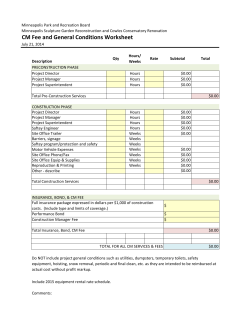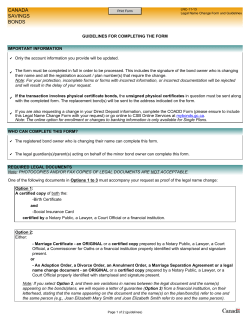
2.5 Drawing Three-Dimensional Molecules
2.5 Drawing Three-Dimensional Molecules The three-dimensional structure of ethane C2H6, has the shape of two tetrahedra joined together. Each carbon atom is SP3 hybridized, with four sigma bonds formed by the four SP3 hybrid orbitals. Dashed lines represent bonds that go away from the viewer, wedges represent bonds that come out toward the viewer, and other bond lines are in the plane of the page. All the bond angles are close to 109.5°. Reference: Organic Chemistry", L.G. Wade, Printice Hall, 8th Edition 1 2.6 General rules of hybridization and geometry Rule 1: Both sigma bonding electrons and lone pairs can occupy hybrid orbitals. The number of hybrid orbitals on an atom is computed by adding the number of sigma bonds and the number of lone pairs of electrons on that atom. Rule 2: Use the hybridization and geometry that give the widest possible separation of the calculated number of bonds and lone pairs. Summary of Hybridization and Geometry Reference: Organic Chemistry", L.G. Wade, Printice Hall, 8th Edition 2 Rule 3: If two or three pairs of electrons form a multiple bond between two atoms, the first bond is a sigma bond formed by a hybrid orbital. The second bond is a pi bond, consisting of two lobes above and below the sigma bond, formed by two unhybridized p orbitals. The third bond of a triple bond is another pi bond, perpendicular to the first pi bond Example 1: Planar geometry of ethylene CH2=CH2. The carbon atoms in ethylene are sp2 hybridized, with trigonal bond angles of about 120°. Reference: Organic Chemistry", L.G. Wade, Printice Hall, 8th Edition 3 Example: Linear geometry of acetylene. The carbon atoms in acetylene are sp hybridized, with linear (180°) bond angles. The triple bond contains one sigma bond and two perpendicular pi bonds Problem 1: Predict the hybridization of the nitrogen atom in ammonia, Draw a picture of the three dimensional structure of ammonia NH3, and predict the bond angles. Reference: Organic Chemistry", L.G. Wade, Printice Hall, 8th Edition 4 2.7 Bond Rotation 2.71 Rotation of Single Bonds We can draw many structures for ethane CH3CH3, structures, differing only in rotations about a single bond, are called conformations. Rotation of single bonds Reference: Organic Chemistry", L.G. Wade, Printice Hall, 8th Edition 5 2.72 Rigidity of Double Bonds Rotation about single bonds is allowed, but double bonds are rigid and cannot be twisted Because double bonds are rigid, we can separate and isolate compounds that differ only in how their substituents are arranged on a double bond. Example: but-2-ene (CH3-CH=CH-CH3) Two different compounds are possible, and they have different physical properties Reference: Organic Chemistry", L.G. Wade, Printice Hall, 8th Edition 6 2.8 Isomerism Isomers are different compounds with the same molecular formula. 2.81 Constitutional Isomerism are isomers that differ in their bonding sequence Example 1: Example 2: Example 3: Reference: Organic Chemistry", L.G. Wade, Printice Hall, 8th Edition 7 2.82 Stereoisomers Are isomers that differ only in how their atoms are oriented in space Cis-trans isomers are also called geometric isomers because they differ in the geometry of the groups on a double bond Reference: Organic Chemistry", L.G. Wade, Printice Hall, 8th Edition 8
© Copyright 2025










